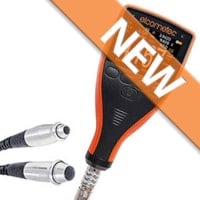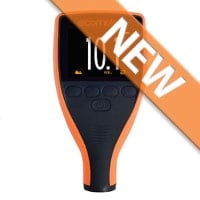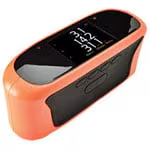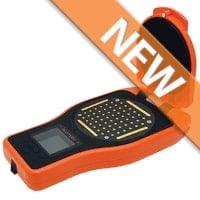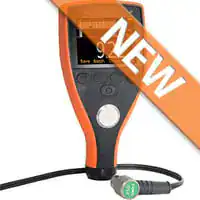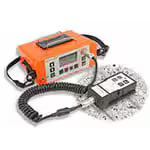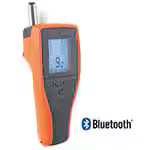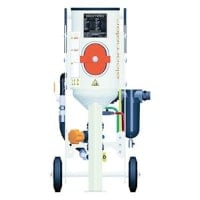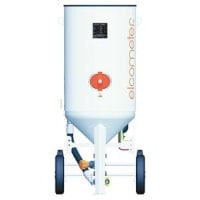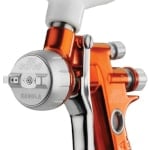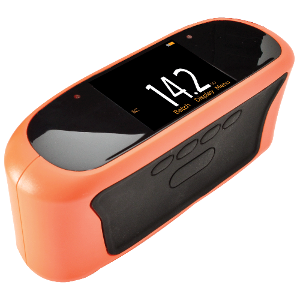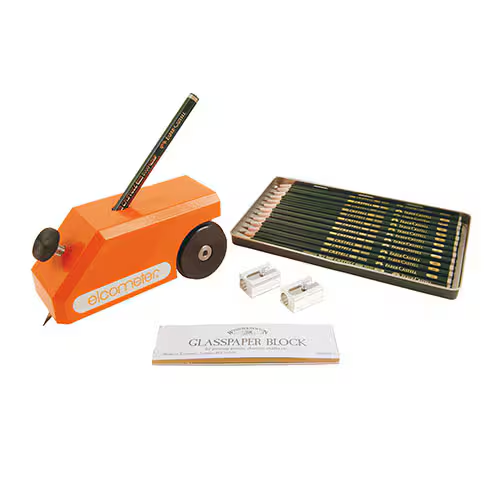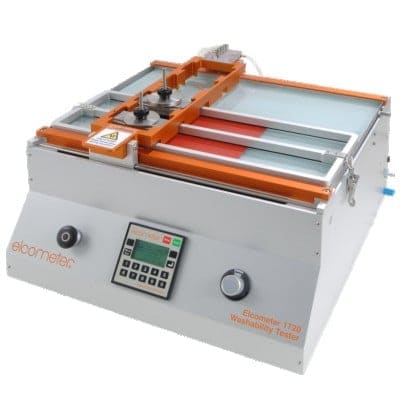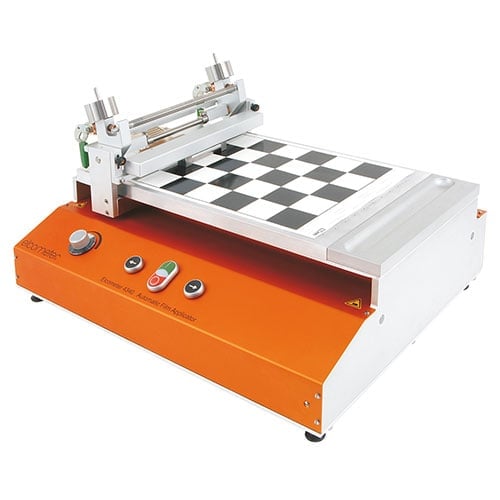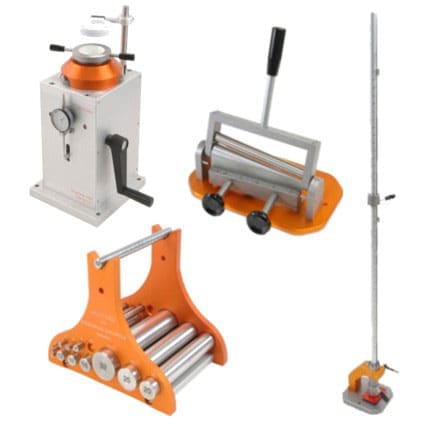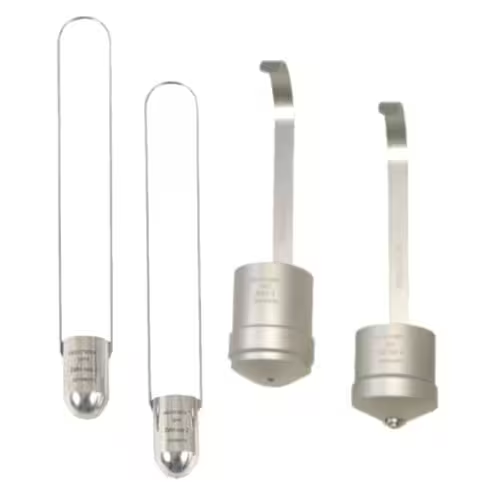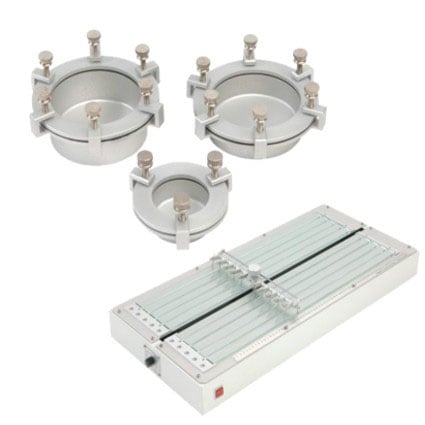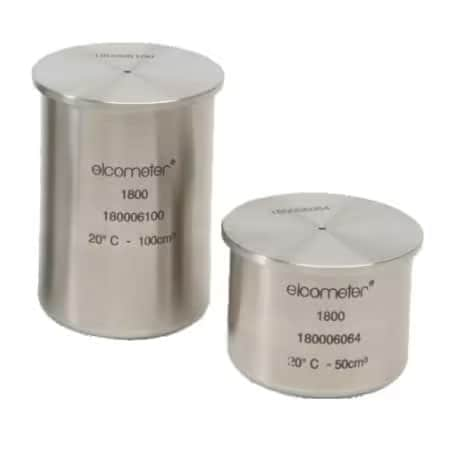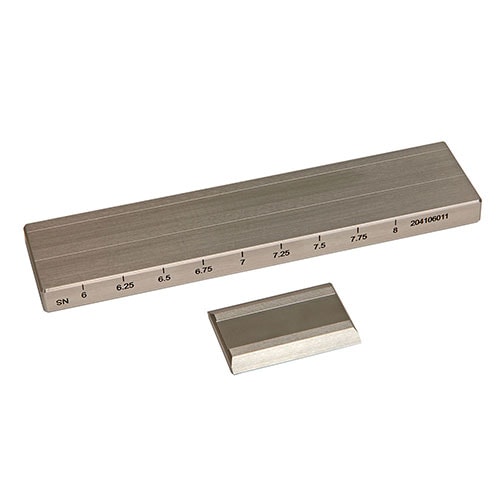|
|
|
Laboratory
The ability of a surface to reflect light without scattering is known as gloss. Gloss is measured by directing a constant intensity light beam at a fixed angle to the test surface and then by monitoring the amount of reflected light at the same angle. Different surfaces require different reflective angles. Elcometer Glossmeters cover the range necessary to measure almost any surface from high gloss to matt, from large to small surfaces, flat or curved.
|
Hardness can be defined as a material's resistance to permanent deformation. In the coatings industry, hardness measurement can be used to determine the resistance of the coating to scratching from general wear and tear and also if a coating is fully cured.
The term "Hardness" is used to refer to different properties of material, specifically:
- Resistance to scratch and wear
- Resistance to penetration
Depending on the requirements, there are various methods for testing hardness. Some are dedicated to characterize coatings and others are more suitable for testing bulk materials such as metals, plastics, rubber or elastomers.
|
Improved mechanical resistance to wear is a key requirement of a wide range of products. From coatings to clothing, leather to upholstery, keypads to plastic toys, a product's ability to resist wear is an important characteristic. There are testing methods relating to the 'abrasion by friction' concept. Others are based on the projection of abrasive particles on to the test specimen. These techniques provide valuable information about materials and processes. The three tests available are:
- Friction: one part moves relative to the other
- Scrubbing: wet or dry brush or sponge is moved over the test piece
- Blast: abrasive particles are projected on to the test specimen
Although it is difficult to correlate test performance with real life wear conditions, mechanical tests can make an accurate comparison.
|
For numerous products, such as paint, ink, varnishes, glue and cosmetics, the reliability of many laboratory tests is directly related to the quality and consistency of the samples. To ensure repeat-ability and reproduce-ability, any measurements made on such coatings, whether for the purpose of describing their physical properties (drying time, elasticity, abrasion etc.) or their appearance, (gloss, color, shade, etc.) are made on the basis of uniform and comparable samples with precisely controlled thickness.
|
Elcometer supply a wide range of Leneta Test Charts, from plain white to those having different patterns of black and white. Produced from high quality, non-fluorescent paper, free of optical brighteners that may affect colour measurements, Leneta Test Charts are the market standard in today's coatings industry. This range of Leneta Test Chart covers a variety of testing needs including the hiding power of coatings, ink qualities, penetration, spreading rates and opacity.
|
The performance of coatings when influenced by external stresses caused by stretching, bending or impacts, determines their suitability for their designed application. A coating designed for use in the coil coating industry, for example, should have the ability to stretch as the substrate is formed into its desired shape without damage. Deformation or damage would reduce the protective quality and appearance including color change, adhesion etc. Further, a coating designed for industrial use should be able to withstand impacts during the life of the product. In order to characterize a coating’s performance to elongation and deformation, a number of repeatable and reproducible tests have been developed.
|
View Viscosity Reference Chart Infographic
Viscosity is perceived as 'thickness' or resistance to pouring, but there is more to viscosity than this. All fluids have an internal friction between molecules, which determines how well fluid flows. Due to this internal friction, energy is required to move the liquid and viscosity is the measure of the resistance to flow. Fluids are categorized as Newtonian or non-Newtonian.
|
When developing a coating process, it is important to know the exact time it takes for the coating to dry or cure. For multicoated paint systems, having knowledge of the drying time enables the operator to know when any subsequent layers can be applied.
There are many stages involved in the coating drying time. Once a coating has been applied, it levels off under gravity, and, as the coating begins to cure, a thin dry film appears on the surface. The coating then continues to dry until; finally, it is totally cured.
|
To maintain consistency of a coating, the Density should remain constant from batch to batch. Density Cups, also known as Specific Gravity Cups or Picnometers, are used to determine the mass per unit volume (Specific Gravity) of a liquid at a given temperature. Specific Gravity is defined as the ratio of the density of a given substance to the density of water, when both are at the same temperature. Elcometer also offer a range of standard balances for laboratory use.
|
The comprehensive range of Elcometer fineness of grind gauges consists of stainless steel blocks with a precision ground scraper. Each block has either one or two channels, precision ground in a uniformly increasing depth from zero at one end to a specified depth at the other, identified by the scale on the gauge.
|
|
|
|
|
|



